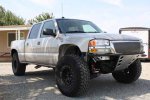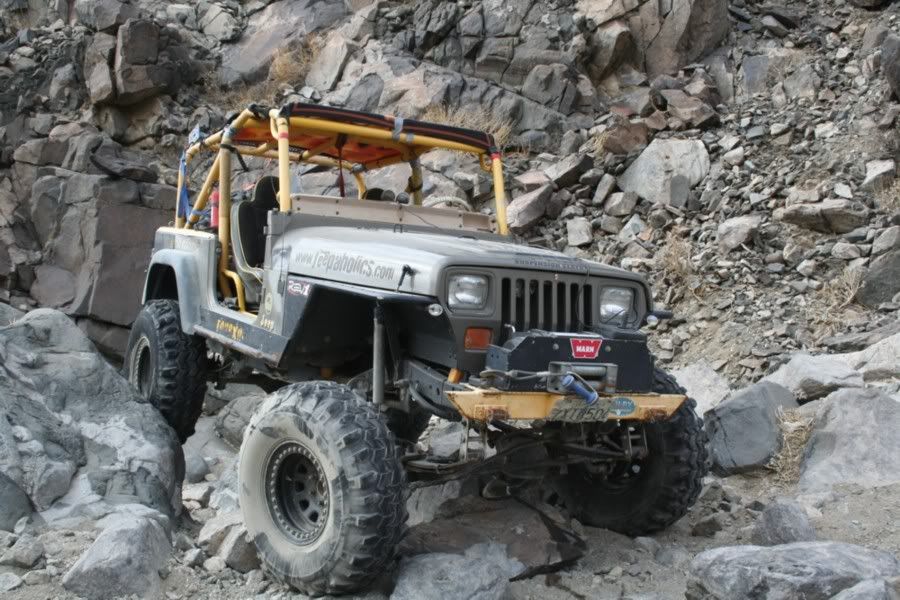So I have a GMC Yukon that I use for moderate off roading. I have offroaded since the md/late 70's (my '76 FJ40 was great!). But my Yukon is not built at all, just about 100% stock. But I have taken it all through the North Maine Woods, it's done Ophir, Cinnamon and Hurricane Pass (not that they're technically tough trails by any means) and a host of other places around the country and has really served me well (wife, 3 kids, dog...when we travel its like the Beverly Hillbillies!  ). And lets face it, I also love what newer technology has given us! Things like fuel injection, ABS etc. have made offroading so much better in my mind (yeah I remember driving my '80 K10 (from MA) carbureted truck in the mountains of CO *cough wheeze*
). And lets face it, I also love what newer technology has given us! Things like fuel injection, ABS etc. have made offroading so much better in my mind (yeah I remember driving my '80 K10 (from MA) carbureted truck in the mountains of CO *cough wheeze*  ) It serves as a DD as well and business/job issues have kept me from making the mods I would like. Anyway....whenever I see people discussing turning full size GM's into expedition worthy vehicles one of the first things I hear/read discussed is swapping in a solid axle in the front.
) It serves as a DD as well and business/job issues have kept me from making the mods I would like. Anyway....whenever I see people discussing turning full size GM's into expedition worthy vehicles one of the first things I hear/read discussed is swapping in a solid axle in the front.
From the discussions I have read it appears to me that this may be more due to the desire to raise/lift the truck and the subsequent effects on the CV joints and other front end parts due to the angle changes than anything wrong with IFS in general for off-roading. Lots of SCORE 4WD racers have IFS so it doesn't appear to me to be something fundamental about IFS that's "bad" for Off Road. So is it because most want to lift their trucks and can't find better quality (i.e. stronger) aftermarket parts for the wear parts on the IFS? Is it something else? I would just think that with the number of GM full-size rigs out there some folks would build stout aftermarket parts to beef up these systems. I have seen some stronger pieces used in some of the builds here so I know there are some pieces out there, but I still seem to see an overwhelming # of folks preferring solid axle swaps and I am just curious.
I appreciate any feedback and I also want to thank everyone who takes so much time and energy posting here be it build threads, ATR's or other. The pictures and stories you post are invaluable as I plan the "next generation" of my rig. Really awesome to see how willing people are to share their experiences and efforts with everyone and thanks for any ideas/thoughts on my IFS question above.
From the discussions I have read it appears to me that this may be more due to the desire to raise/lift the truck and the subsequent effects on the CV joints and other front end parts due to the angle changes than anything wrong with IFS in general for off-roading. Lots of SCORE 4WD racers have IFS so it doesn't appear to me to be something fundamental about IFS that's "bad" for Off Road. So is it because most want to lift their trucks and can't find better quality (i.e. stronger) aftermarket parts for the wear parts on the IFS? Is it something else? I would just think that with the number of GM full-size rigs out there some folks would build stout aftermarket parts to beef up these systems. I have seen some stronger pieces used in some of the builds here so I know there are some pieces out there, but I still seem to see an overwhelming # of folks preferring solid axle swaps and I am just curious.
I appreciate any feedback and I also want to thank everyone who takes so much time and energy posting here be it build threads, ATR's or other. The pictures and stories you post are invaluable as I plan the "next generation" of my rig. Really awesome to see how willing people are to share their experiences and efforts with everyone and thanks for any ideas/thoughts on my IFS question above.
Last edited:





